Table of Contents
Adjectives are words that describe or modify nouns, providing more information about them. Understanding the different types of adjectives—such as descriptive, quantitative, demonstrative, and possessive—is essential for constructing clear and effective sentences.
Each type serves a unique purpose, helping to convey specific meanings and relationships between words, thereby enhance language and communication.
What is an Adjective?
An adjective is a word that describes or modifies a noun or pronoun. It provides additional information about the noun, such as its appearance, quantity, or ownership.
Example Sentences:
He wore a red dress,
(red describes the color of the dress )
She has a bright smile.
(bright is an adjective describing the quality of her smile)
They live in a small house.
(small is the adjective that describes the size of the house)
Types of Adjectives
- Descriptive Adjectives
- Quantitative Adjectives
- Demonstrative Adjectives
- Possessive Adjectives
- Interrogative Adjectives
- Indefinite Adjectives
- Proper Adjectives
- Articles as Adjectives
- Distributive Adjectives
- Numeral Adjectives
- Participial Adjectives
1. Descriptive Adjectives
Descriptive adjectives describe the qualities or characteristics of a noun. They answer questions like What kind? or Which one?
- The tall man is standing at the door.
- She has a beautiful garden.
In these examples, tall describes the height of the man, and beautiful gives us more information about the garden.
2. Quantitative adjectives
Quantitative adjectives tell us the quantity or amount of something. They answer questions like How much? or How many? These adjectives are used when discussing numbers or an indefinite amount.
- she has three cats.
- We need some sugar.
Three gives the exact number of cats, while some shows an indefinite amount of sugar.
Demonstrative adjectives point out specific nouns and distinguish them from others. They answer the question “Which one?” and include words like this, that, these, and those.
- This book is interesting.
- Those flowers are beautiful.
This refers to a specific book, and those points out particular flowers.
4. Possessive Adjectives
Possessive adjectives indicate ownership or belonging. They modify a noun to show who it belongs to. Common possessive adjectives include my, your, his, her, its, our, and their.
- This is her bike.
- Their house is near the park.
Her shows that the bike belongs to a girl, and their indicates that the house belongs to them.
5. Interrogative Adjectives
Interrogative adjectives are used to ask questions. They are placed before a noun to ask for more information about it. Common interrogative adjectives include which, what, and whose.
- Which car are you driving?
- Whose pen is this?
Which is asking for a specific car, and whose is asking about the owner of the pen.
6. Indefinite Adjectives
Indefinite adjectives describe a non-specific quantity of a noun. These adjectives include words like some, many, few, several, and any.
- There are many stars in the sky.
- I have few friends.
Many gives a general idea of the number of stars, and few indicates a small number of friends without being specific.
7. Proper Adjectives
Proper adjectives are derived from proper nouns and are always capitalized. They describe the origin, nationality, or brand of a noun.
- She loves Italian food.
- I read a Shakespearean play.
Italian is derived from the proper noun Italy, and “Shakespearean” is related to the famous writer Shakespeare.
8. Articles as Adjectives
The words a, an, and the are also considered adjectives because they define whether something is specific or general. These are known as articles.
- The dog is barking.
- I saw a bird.
The points to a specific dog, while a introduces a general bird.
9. Distributive Adjectives
Distributive adjectives are used to refer to individual members of a group. They include words like each, every, either, and neither.
- Each student must submit their assignment.
- Neither option is available.
Each refers to every single student individually, while neither indicates that both options are unavailable.
10. Numeral Adjectives
Numeral adjectives indicate the number or order of nouns. They are either cardinal (one, two, three) or ordinal (first, second, third).
- She has two books. (Cardinal)
- This is my first car. (Ordinal)
Two shows the exact number of books, and first indicates the order of the car.
11. Participial Adjectives
Participial adjectives are formed from verbs, usually ending in -ing or -ed. They describe a noun’s state or characteristics.
- The boring lecture made me sleepy.
- He was bored during the meeting.
Boring describes the lecture’s quality, while bored describes how she felt.
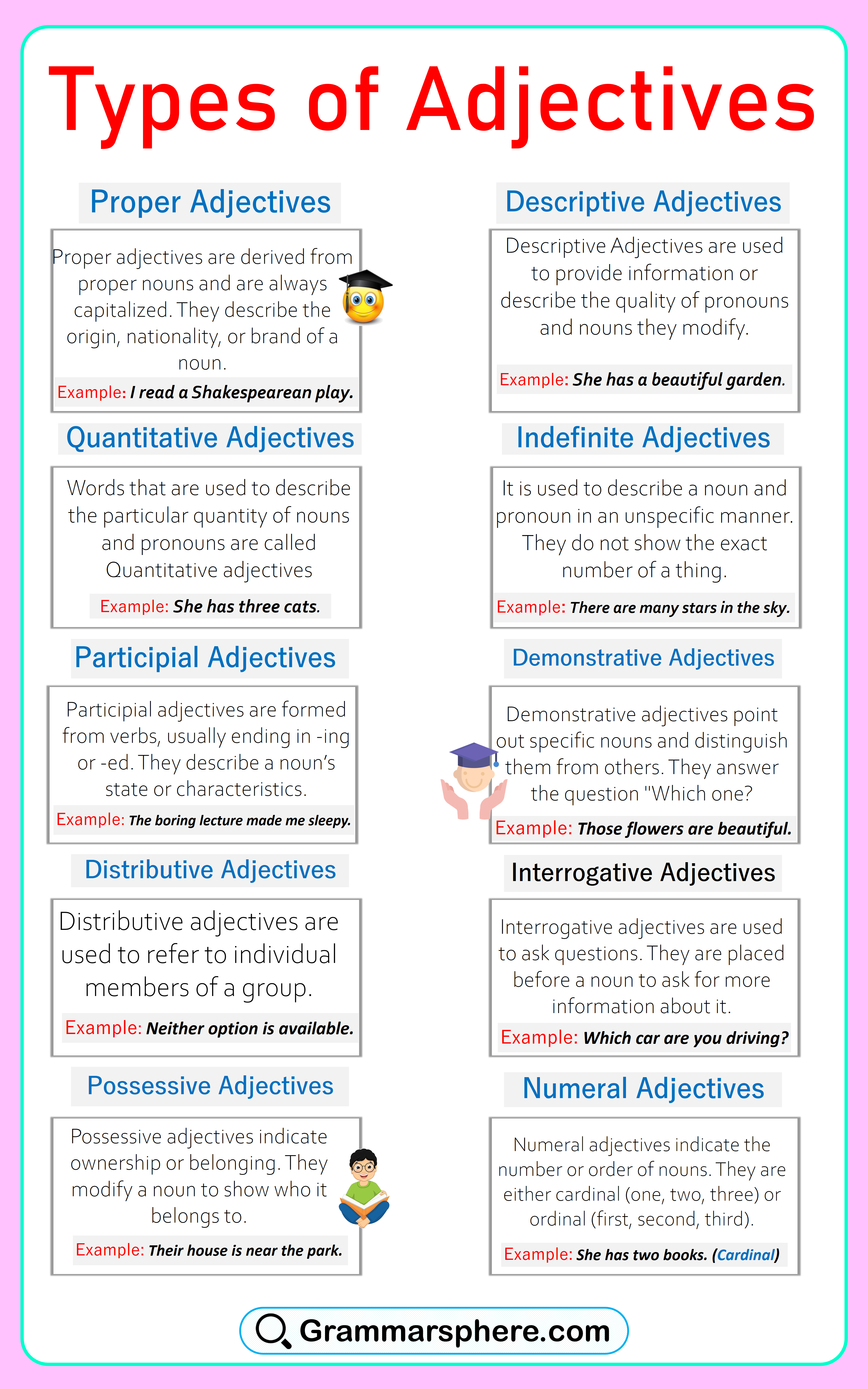
How to Use Adjectives in Sentences
Adjectives generally appear before the noun they modify. For instance, in The blue car is fast, the adjective blue comes before the noun car. However, adjectives can also follow the noun when it is used with linking verbs like is, seem, become.
For example, The car is blue.
When using multiple adjectives, there is a specific order to follow, known as the Order of Adjectives:
- Opinion (e.g., lovely)
- Size (e.g., big)
- Age (e.g., new)
- Shape (e.g., round)
- Color (e.g., red)
- Origin (e.g., French)
- Material (e.g., wooden)
- Purpose (e.g., gardening)
Example:
She bought a beautiful large old round blue French wooden gardening table.
)This order makes sentences sound natural.)
Comparative and Superlative Adjectives
Comparative adjectives are used to compare two nouns. They are often formed by adding -er to the adjective or using the word “more” before it.
- This room is larger than that one.
- She is more intelligent than her brother.
Superlative adjectives are used to compare more than two nouns, indicating the highest or lowest degree. These are formed by adding -est to the adjective or using most.
- This is the largest room in the house.
- She is the most intelligent student in the class.
Adjectives vs. Adverbs
Adjectives describe nouns, while adverbs modify verbs, adjectives, or other adverbs. Adverbs often end in -ly. For example:
- Adjective: She is a quick runner.
(Describes the noun runner)
- Adverb: She runs quickly.
(Describes the verb runs)
It’s important to distinguish between the two because confusing them can lead to mistakes. For instance:
- Incorrect: She sings beautiful.
- Correct: She sings beautifully.
Common Mistakes with Adjectives
1. Using adjectives in the wrong order
Adjectives should follow the order of adjectives rule.
❌ She bought a wooden small old round table.
✅ She bought a small old round wooden table.
2. Mixing up adjectives and adverbs:
Beginners often confuse adjectives with adverbs, especially in sentences that describe actions.
❌He runs quick
✅ Correct: He runs quickly.
3. Using double comparatives or superlatives
Some learners mistakenly use two comparative or superlative forms together.
❌ This book is more better than that one.
✅ This book is better than that one.
4. Not matching adjectives with uncountable nouns
Some adjectives work with countable nouns, while others suit uncountable nouns.
❌I have many water.
✅ I have much water.
FAQS
What is an adjective?
An adjective is a word that describes a noun (e.g., beautiful, tall).
What are the types of adjectives?
Common types include descriptive, quantitative, demonstrative, possessive, and interrogative adjectives.
What is an example of an adjective in a sentence?
Sara wore a blue dress. (The word blue is an adjective.)
What is the difference between an adjective and an adverb?
An adjective describes a noun, while an adverb describes a verb, adjective, or another adverb.
Can a sentence have more than one adjective?
Yes! Example: Ali has a small, brown puppy.
You May Also Like

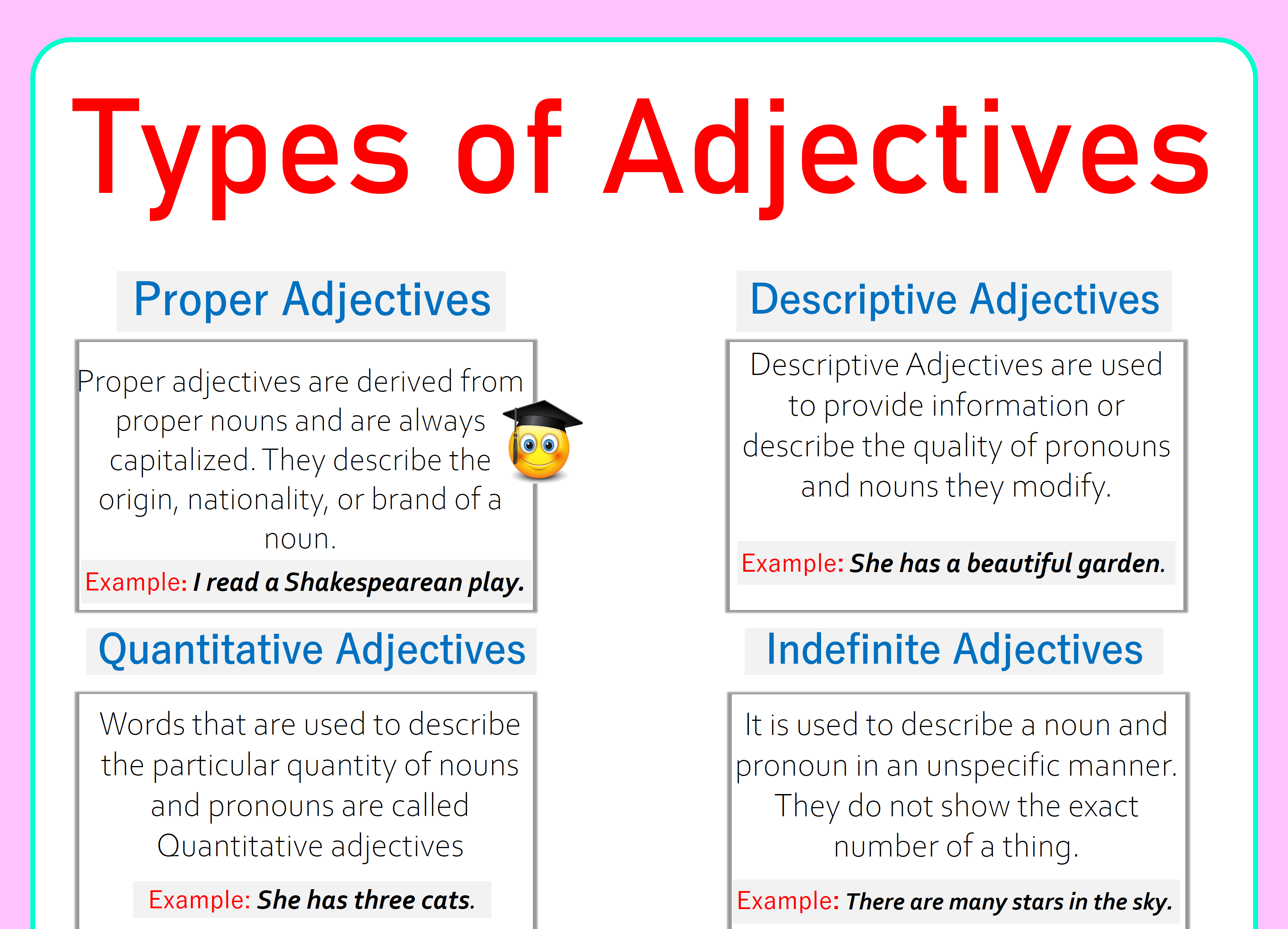
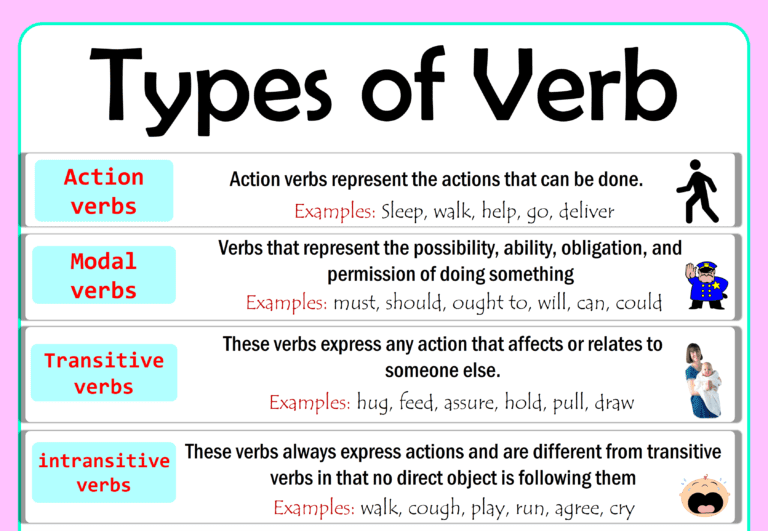
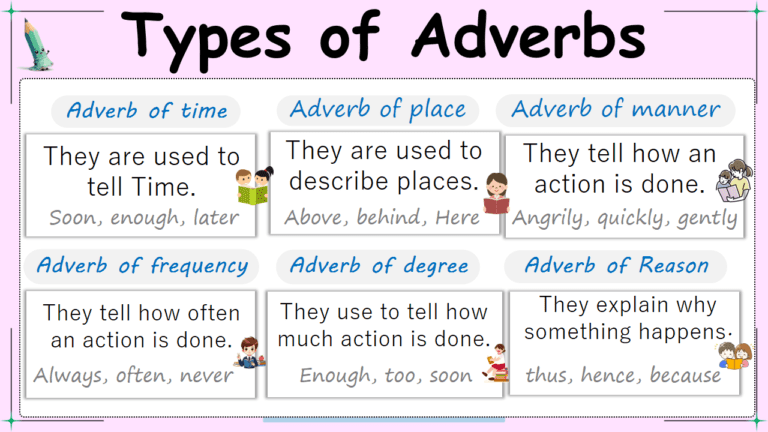
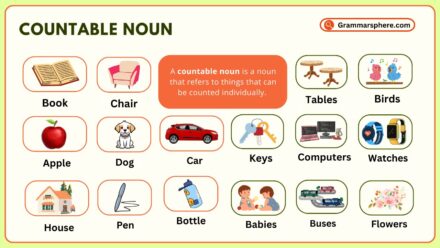
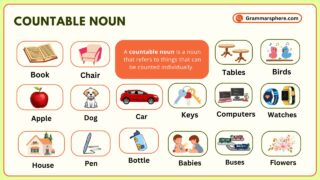
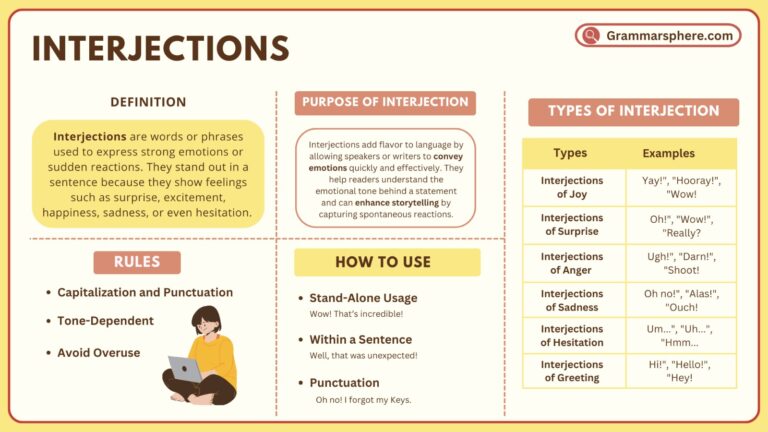
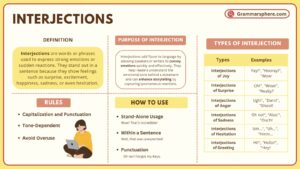
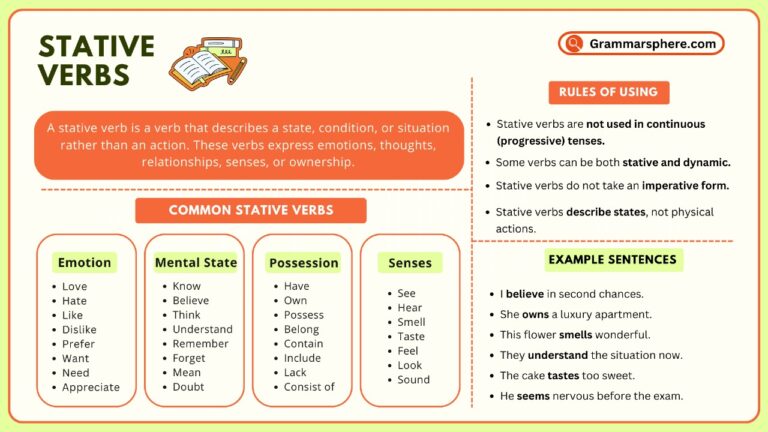
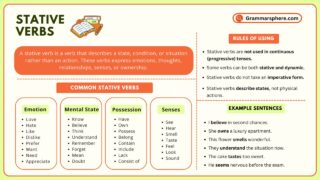
Leave a Comment